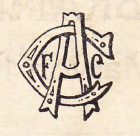Attention: Please take a moment to consider our terms and conditions before posting.
Front Line Charlton

Henry Irving
Posts: 85,409
Luftwaffe target map from WW2 pointing out Siemens & other factories on the streets where Charlton were formed.
You can clearly see the Valley just below the red target area yet the Valley only took one direct hit.
From the Greenwich Heritage Archive.

From the Greenwich Heritage Archive.

21
Comments
-
Must've been bloody terrifying.0
-
Can see the house that my dad lived at the time on that photo. A few months later he was off to join the Navy aged 17.0
-
The 'Layers of London' project has the London County Council's bomb damage maps which show building by building - herecolour indicates how badly damaged - black means building totally destroyed, purple is damaged beyond repair, then red, orange, yellow being minor damage. the circles indicate a V1 or V2 landing. (green is 'clearance area' - bits that the LCC was either rebuilding before the war, or was just about to)maps cover the old county of London, so today's Lewisham and Greenwich boroughs, but not Bexley or Bromley.Mum-Cat would have been 6 and a bit when the war ended - mostly living round the Belvedere / Dartford patch. She once heard a V1 'doodlebug' stop overhead (if you heard them stop, you were actually usually safe, as they would glide on for a bit before they came down and went bang, but...)1
-
The road I grew up on is in that photo. Kinveachy Gardens. The house was badly bomb damaged during WWII by a bomb that flattened about nine houses right opposite. Fortunately before my time.2
-
Our double agents were feeding the Nazis intelligence on impact of V bombs and the Nazis were led to believe more were falling in the North West of London than intended. This led to many being directed South east of actual targets and landing in non-industrial parts of South East London including the Charlton area.
A controversial piece of deception to divert deaths from one area to another to reduce overall mortality.
3 -
I read somewhere that Danson lake was drained as it was used as an aiming point for hitting Woolwich and the docks.addick1956 said:
I believe it was Churchill's idea . He wanted them to fall in the countryside which then was West of Carford towards Bromley and Orpington.Dippenhall said:Our double agents were feeding the Nazis intelligence on impact of V bombs and the Nazis were led to believe more were falling in the North West of London than intended. This led to many being directed South east of actual targets and landing in non-industrial parts of South East London including the Charlton area.
A controversial piece of deception to divert deaths from one area to another to reduce overall mortality.
Charlton and NW Kent plus Woolwich were place they didn't want hit due to the war industrial effort.0 -
I only found this out a couple of years ago. If you go into Oxleas Woods and head for the wonderful cafe at the top of the slope and look down the hill towards Rochester Way and Eltham. Towards the bottom the whole area flattens out. This was the site during WWII of an Italian POW camp. Apparently the prisoners were no bother and were often seen strolling through Welling. In dry weather you can still make out the footprint of the camp through the grass.5
-
Account here of pow camp on the other side of shooters hill. Chalton content too, then a contributer at the very end asks about an Italian pow camp 'just off rochester way':
http://e-shootershill.co.uk/2015/06/11/prisoner-of-war-working-company-1020-shooters-hill/
3 -
My dad lived in Plum Lane, always loved telling the story of going out & picking up shrapnel to compare with his mates at school and watching the AA Battery’s on Bostall Heath firing into the night skies.0
-
Gun emplacements on Bostall Heath (always take an opportunity to post a link to this site : )
https://maps.nls.uk/geo/explore/spy/#zoom=16.390217746887455&lat=51.48015&lon=0.11993&layers=170&b=1&r=50
0 -
Sponsored links:
-
Time Team did an episode on Shooters Hill and the defensive emplacements based there...
Time Team Season 15, Episode 6 Blitzkrieg on Shooters Hill Shooters Hill, London - YouTube
2 -
My Mum's Dad had a bit of a V1 land at his feet in his garden in Greenwich. Fortunately, it wasn't the bit that goes 'bang'.CatfordCat said:The 'Layers of London' project has the London County Council's bomb damage maps which show building by building - herecolour indicates how badly damaged - black means building totally destroyed, purple is damaged beyond repair, then red, orange, yellow being minor damage. the circles indicate a V1 or V2 landing. (green is 'clearance area' - bits that the LCC was either rebuilding before the war, or was just about to)maps cover the old county of London, so today's Lewisham and Greenwich boroughs, but not Bexley or Bromley.Mum-Cat would have been 6 and a bit when the war ended - mostly living round the Belvedere / Dartford patch. She once heard a V1 'doodlebug' stop overhead (if you heard them stop, you were actually usually safe, as they would glide on for a bit before they came down and went bang, but...)3 -
Black Saturday September 1940 when nearly a thousand German planes attacked London, in a single air raid. The first massive attack on London’s dock lands by the Luftwaffe.0
-
Never knew that, thanksswords_alive said:Account here of pow camp on the other side of shooters hill. Chalton content too, then a contributer at the very end asks about an Italian pow camp 'just off rochester way':
http://e-shootershill.co.uk/2015/06/11/prisoner-of-war-working-company-1020-shooters-hill/0 -
The house I was brought up in is marked purple, but certainly wasn't damaged beyond repair. The neighbour's house was completely destroyed and rebuilt post war though and I remember having to 'sharpen the carving knife' on a Sunday on the adjacent flank wall of our house, which was peppered with shrapnel.CatfordCat said:The 'Layers of London' project has the London County Council's bomb damage maps which show building by building - herecolour indicates how badly damaged - black means building totally destroyed, purple is damaged beyond repair, then red, orange, yellow being minor damage. the circles indicate a V1 or V2 landing. (green is 'clearance area' - bits that the LCC was either rebuilding before the war, or was just about to)maps cover the old county of London, so today's Lewisham and Greenwich boroughs, but not Bexley or Bromley.Mum-Cat would have been 6 and a bit when the war ended - mostly living round the Belvedere / Dartford patch. She once heard a V1 'doodlebug' stop overhead (if you heard them stop, you were actually usually safe, as they would glide on for a bit before they came down and went bang, but...)0 -
My dad who lived in Bexleyheath as a kid in WW2 told me how he befriended the Italian Prisoners of war who fixed bomb damaged roofs. It inspired the Bartram Blitz and Beyond project you can see in the link below. Much of the content overlaps with discussions here from Henry's Luftwaffe target map to the POW camp at Woodlands. You can teach the whole of WW2 through CAFC:
https://www.crayfordhistory.org.uk/category/projects/bartram-the-blitz-and-beyond
1 -
I found both of my parents properties on the map as they both lived in Charlton and were bombed out during the war.
My mother lived in Charlton Park Lane. The house was destroyed and they lost all their possessions but they were all safe.
The flying bomb that destroyed my father's house in Mascalls Road was much more devastating. My father (the oldest sibling) and his next oldest brother were on their way to Boys' Brigade in Blackheath when it hit. They returned home to find that one of his brothers, about six years old, had run to the top of the air raid shelter and his parents had gone up to fetch him when it exploded. The brother was killed; his mother had been put aside, expected to die, while his father had been rushed off to hospital. His mother did survive but his father had permanently lost his sight.
There was a remarkable coincidence a few years ago, when I was running a quiz night for the motorcycle club I belong to. Someone came up and introduced himself; he said it was the first time he had come across someone with the same surname as himself since going to a school in Charlton with another boy who had the name.
It turned out that the boy he referred to was my uncle and that he was my late father's cousin. Furthermore, his father had had to sign the death certificate for the brother who was killed as neither of his parents were in fit condition to do so.2









